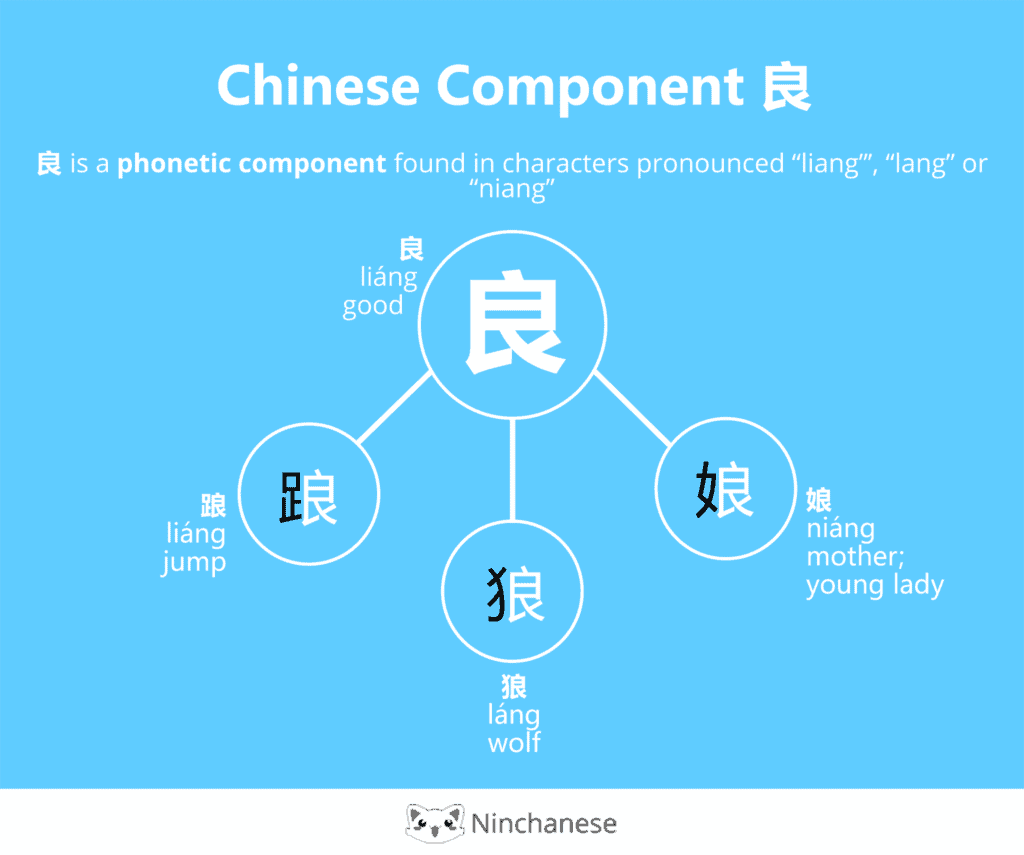The Chinese character 良
And its component form
良
liáng
- good
- very
- very much
In addition to being a character, 良 is also a character component

When used as a component in a Chinese character, 良 is a phonetic component. It brings its pronunciation “liáng” to the words it’s in, or the characters in its in will sound close to “liáng”.
As a rule of thumb, you can consider words that contain 良 will either be pronounced “liáng” or “liàng” (different tones), niang (different initial), or “lang”.
These characters all contain 良 and sound like “liáng”, “lang” or “niang”.
When used as a character component, 良 can also be found in a word pronounced “yang”, which is close to the sound “liang”.
The Chinese language is over 5000 years old, so, unsurprisingly, some characters’ pronunciations have evolved a little over time. Chinese characters containing 良 will therefore sometimes have a pronunciation close to the sound “liang” but not quite the same. You’ll also meet characters that contain 良 and are pronounced “lang” or “niang”. But pay attention to this character because the word 養 is an exception.
Sound “yang”
You can find the character component 良 being pronounced “yang” in the word:
養 yǎng: to raise (animals); to bring up (children); to give birth
You’ll also find the phonetic component 良 in many other Chinese characters. Browse the full list here.
All 80,000+ Chinese characters share the same character components. Chinese character components are therefore essential for Chinese learners: they are the building blocks of Chinese. Character character components help tremendously with understanding a character: they provide information on its meaning or on its pronunciation. In short, knowing character components will help you analyse, learn and remember each Chinese character much better.
Join us on Ninchanese as we teach you everything about the Chinese character components you need to know, little by little.
